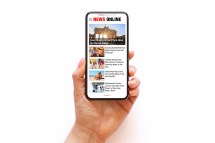Laying out newspapers online has transformed the way publishers design, edit, and distribute their content. With digital tools, creating visually appealing and organized newspaper layouts has become more efficient and accessible than ever before. Whether you’re a seasoned editor or just starting out, understanding the best tools and practical tips can elevate your newspaper’s presentation.
Choosing the Right Software for Newspaper Layout
Selecting appropriate layout software is crucial for producing professional-quality newspapers online. Popular options include Adobe InDesign, Scribus, and Canva. Adobe InDesign is favored by many professionals due to its advanced features like precise typography control and seamless integration with other Adobe products. Scribus offers a free open-source alternative with powerful layout capabilities suitable for budget-conscious publications. Canva provides user-friendly drag-and-drop tools perfect for beginners or those seeking quick results without steep learning curves.
Understanding Grid Systems and Design Principles
A strong foundation in grid systems helps create balanced newspaper layouts that guide readers naturally through content. Grids divide the page into sections to organize headlines, images, articles, and advertisements cleanly. Alongside grids, familiarizing yourself with design principles such as contrast, alignment, proximity, repetition, and white space ensures your newspaper remains appealing while maintaining readability.
Incorporating High-Quality Images and Graphics
Visual elements play a vital role in engaging readers. Use high-resolution images relevant to your stories to add context without compromising load times or clarity on digital platforms. Additionally, incorporating infographics or charts can effectively communicate complex data in an easily digestible format. Always ensure you have rights to use these visuals or opt for royalty-free resources when necessary.
Optimizing Layouts for Different Devices
Since many readers access newspapers on various devices such as tablets or smartphones, optimizing layouts responsively is essential. Responsive design adapts the content’s appearance depending on screen size without losing functionality or aesthetics. Testing your layouts across multiple devices ensures consistent user experience regardless of how your audience consumes the news digitally.
Streamlining Collaboration Among Editorial Teams
Online newspaper layout often involves multiple contributors including editors, writers, designers, and advertisers working together remotely. Utilizing cloud-based platforms allows real-time collaboration where changes are tracked instantly facilitating faster feedback cycles and reducing errors before publication deadlines.
Mastering the art of laying out newspapers online requires combining reliable tools with proven design strategies tailored for digital consumption. By selecting suitable software platforms, applying sound layout principles, enhancing visual storytelling elements appropriately optimized across devices while fostering team collaboration—the overall quality of online newspapers can be significantly improved.
This text was generated using a large language model, and select text has been reviewed and moderated for purposes such as readability.






